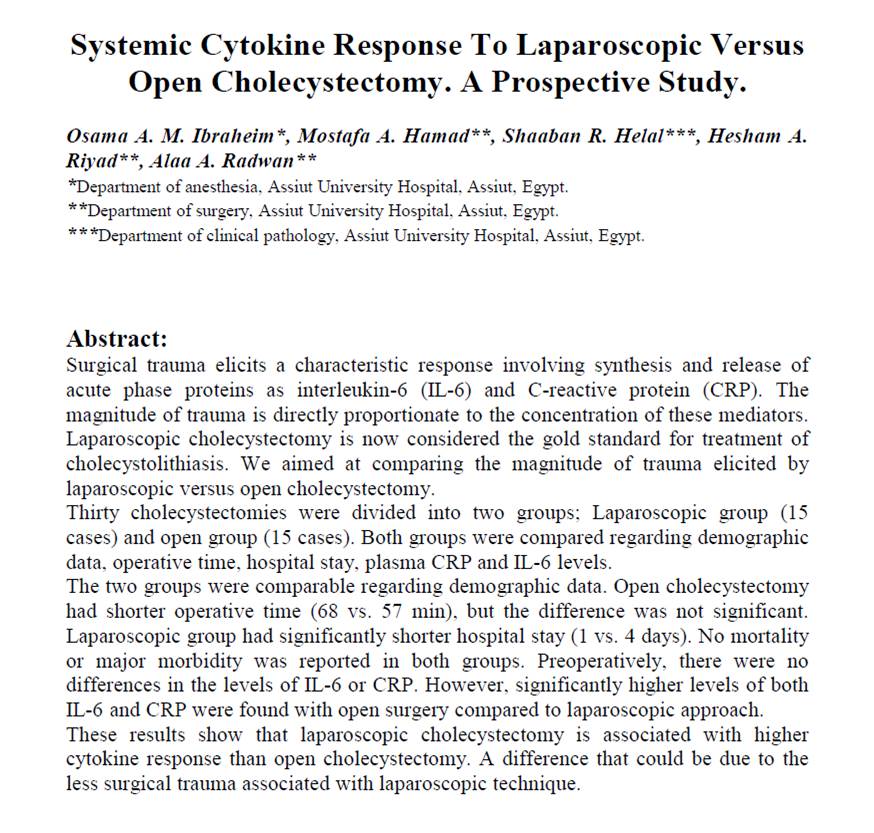Abstract:
Surgical trauma elicits a characteristic response involving synthesis and release of acute phase proteins as interleukin-6 (IL-6) and C-reactive protein (CRP). The magnitude of trauma is directly proportionate to the concentration of these mediators. Laparoscopic cholecystectomy is now considered the gold standard for treatment of cholecystolithiasis. We aimed at comparing the magnitude of trauma elicited by laparoscopic versus open cholecystectomy.
Thirty cholecystectomies were divided into two groups; Laparoscopic group (15 cases) and open group (15 cases). Both groups were compared regarding demographic data, operative time, hospital stay, plasma CRP and IL-6 levels.
The two groups were comparable regarding demographic data. Open cholecystectomy had shorter operative time (68 vs. 57 min), but the difference was not significant. Laparoscopic group had significantly shorter hospital stay (1 vs. 4 days). No mortality or major morbidity was reported in both groups. Preoperatively, there were no differences in the levels of IL-6 or CRP. However, significantly higher levels of both IL-6 and CRP were found with open surgery compared to laparoscopic approach.
These results show that laparoscopic cholecystectomy is associated with higher cytokine response than open cholecystectomy. A difference that could be due to the less surgical trauma associated with laparoscopic technique.


